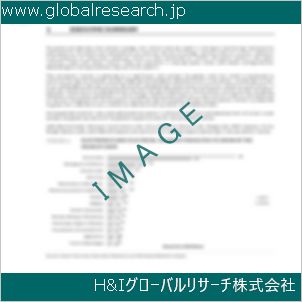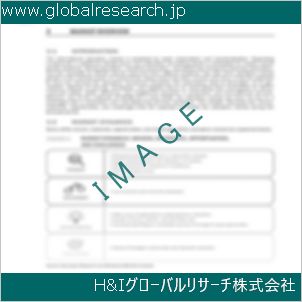1 Current Sensors for Automotive Market Overview
1.1 Product Definition
1.2 Current Sensors for Automotive Segment by Type
1.2.1 Global Current Sensors for Automotive Market Value Growth Rate Analysis by Type 2022 VS 2029
1.2.2 Hall Based Current Sensor
1.2.3 Shunt Based Current Sensor
1.2.4 Others
1.3 Current Sensors for Automotive Segment by Application
1.3.1 Global Current Sensors for Automotive Market Value Growth Rate Analysis by Application: 2022 VS 2029
1.3.2 Gas Vehicle
1.3.3 Electric Vehicle
1.4 Global Market Growth Prospects
1.4.1 Global Current Sensors for Automotive Production Value Estimates and Forecasts (2018-2029)
1.4.2 Global Current Sensors for Automotive Production Capacity Estimates and Forecasts (2018-2029)
1.4.3 Global Current Sensors for Automotive Production Estimates and Forecasts (2018-2029)
1.4.4 Global Current Sensors for Automotive Market Average Price Estimates and Forecasts (2018-2029)
1.5 Assumptions and Limitations
2 Market Competition by Manufacturers
2.1 Global Current Sensors for Automotive Production Market Share by Manufacturers (2018-2023)
2.2 Global Current Sensors for Automotive Production Value Market Share by Manufacturers (2018-2023)
2.3 Global Key Players of Current Sensors for Automotive, Industry Ranking, 2021 VS 2022 VS 2023
2.4 Global Current Sensors for Automotive Market Share by Company Type (Tier 1, Tier 2 and Tier 3)
2.5 Global Current Sensors for Automotive Average Price by Manufacturers (2018-2023)
2.6 Global Key Manufacturers of Current Sensors for Automotive, Manufacturing Base Distribution and Headquarters
2.7 Global Key Manufacturers of Current Sensors for Automotive, Product Offered and Application
2.8 Global Key Manufacturers of Current Sensors for Automotive, Date of Enter into This Industry
2.9 Current Sensors for Automotive Market Competitive Situation and Trends
2.9.1 Current Sensors for Automotive Market Concentration Rate
2.9.2 Global 5 and 10 Largest Current Sensors for Automotive Players Market Share by Revenue
2.10 Mergers & Acquisitions, Expansion
3 Current Sensors for Automotive Production by Region
3.1 Global Current Sensors for Automotive Production Value Estimates and Forecasts by Region: 2018 VS 2022 VS 2029
3.2 Global Current Sensors for Automotive Production Value by Region (2018-2029)
3.2.1 Global Current Sensors for Automotive Production Value Market Share by Region (2018-2023)
3.2.2 Global Forecasted Production Value of Current Sensors for Automotive by Region (2024-2029)
3.3 Global Current Sensors for Automotive Production Estimates and Forecasts by Region: 2018 VS 2022 VS 2029
3.4 Global Current Sensors for Automotive Production by Region (2018-2029)
3.4.1 Global Current Sensors for Automotive Production Market Share by Region (2018-2023)
3.4.2 Global Forecasted Production of Current Sensors for Automotive by Region (2024-2029)
3.5 Global Current Sensors for Automotive Market Price Analysis by Region (2018-2023)
3.6 Global Current Sensors for Automotive Production and Value, Year-over-Year Growth
3.6.1 North America Current Sensors for Automotive Production Value Estimates and Forecasts (2018-2029)
3.6.2 Europe Current Sensors for Automotive Production Value Estimates and Forecasts (2018-2029)
3.6.3 China Current Sensors for Automotive Production Value Estimates and Forecasts (2018-2029)
3.6.4 Japan Current Sensors for Automotive Production Value Estimates and Forecasts (2018-2029)
4 Current Sensors for Automotive Consumption by Region
4.1 Global Current Sensors for Automotive Consumption Estimates and Forecasts by Region: 2018 VS 2022 VS 2029
4.2 Global Current Sensors for Automotive Consumption by Region (2018-2029)
4.2.1 Global Current Sensors for Automotive Consumption by Region (2018-2023)
4.2.2 Global Current Sensors for Automotive Forecasted Consumption by Region (2024-2029)
4.3 North America
4.3.1 North America Current Sensors for Automotive Consumption Growth Rate by Country: 2018 VS 2022 VS 2029
4.3.2 North America Current Sensors for Automotive Consumption by Country (2018-2029)
4.3.3 United States
4.3.4 Canada
4.4 Europe
4.4.1 Europe Current Sensors for Automotive Consumption Growth Rate by Country: 2018 VS 2022 VS 2029
4.4.2 Europe Current Sensors for Automotive Consumption by Country (2018-2029)
4.4.3 Germany
4.4.4 France
4.4.5 U.K.
4.4.6 Italy
4.4.7 Russia
4.5 Asia Pacific
4.5.1 Asia Pacific Current Sensors for Automotive Consumption Growth Rate by Region: 2018 VS 2022 VS 2029
4.5.2 Asia Pacific Current Sensors for Automotive Consumption by Region (2018-2029)
4.5.3 China
4.5.4 Japan
4.5.5 South Korea
4.5.6 China Taiwan
4.5.7 Southeast Asia
4.5.8 India
4.6 Latin America, Middle East & Africa
4.6.1 Latin America, Middle East & Africa Current Sensors for Automotive Consumption Growth Rate by Country: 2018 VS 2022 VS 2029
4.6.2 Latin America, Middle East & Africa Current Sensors for Automotive Consumption by Country (2018-2029)
4.6.3 Mexico
4.6.4 Brazil
4.6.5 Turkey
5 Segment by Type
5.1 Global Current Sensors for Automotive Production by Type (2018-2029)
5.1.1 Global Current Sensors for Automotive Production by Type (2018-2023)
5.1.2 Global Current Sensors for Automotive Production by Type (2024-2029)
5.1.3 Global Current Sensors for Automotive Production Market Share by Type (2018-2029)
5.2 Global Current Sensors for Automotive Production Value by Type (2018-2029)
5.2.1 Global Current Sensors for Automotive Production Value by Type (2018-2023)
5.2.2 Global Current Sensors for Automotive Production Value by Type (2024-2029)
5.2.3 Global Current Sensors for Automotive Production Value Market Share by Type (2018-2029)
5.3 Global Current Sensors for Automotive Price by Type (2018-2029)
6 Segment by Application
6.1 Global Current Sensors for Automotive Production by Application (2018-2029)
6.1.1 Global Current Sensors for Automotive Production by Application (2018-2023)
6.1.2 Global Current Sensors for Automotive Production by Application (2024-2029)
6.1.3 Global Current Sensors for Automotive Production Market Share by Application (2018-2029)
6.2 Global Current Sensors for Automotive Production Value by Application (2018-2029)
6.2.1 Global Current Sensors for Automotive Production Value by Application (2018-2023)
6.2.2 Global Current Sensors for Automotive Production Value by Application (2024-2029)
6.2.3 Global Current Sensors for Automotive Production Value Market Share by Application (2018-2029)
6.3 Global Current Sensors for Automotive Price by Application (2018-2029)
7 Key Companies Profiled
7.1 LEM Holding SA
7.1.1 LEM Holding SA Current Sensors for Automotive Corporation Information
7.1.2 LEM Holding SA Current Sensors for Automotive Product Portfolio
7.1.3 LEM Holding SA Current Sensors for Automotive Production, Value, Price and Gross Margin (2018-2023)
7.1.4 LEM Holding SA Main Business and Markets Served
7.1.5 LEM Holding SA Recent Developments/Updates
7.2 Allegro Microsystems, LLC
7.2.1 Allegro Microsystems, LLC Current Sensors for Automotive Corporation Information
7.2.2 Allegro Microsystems, LLC Current Sensors for Automotive Product Portfolio
7.2.3 Allegro Microsystems, LLC Current Sensors for Automotive Production, Value, Price and Gross Margin (2018-2023)
7.2.4 Allegro Microsystems, LLC Main Business and Markets Served
7.2.5 Allegro Microsystems, LLC Recent Developments/Updates
7.3 Melexis NV
7.3.1 Melexis NV Current Sensors for Automotive Corporation Information
7.3.2 Melexis NV Current Sensors for Automotive Product Portfolio
7.3.3 Melexis NV Current Sensors for Automotive Production, Value, Price and Gross Margin (2018-2023)
7.3.4 Melexis NV Main Business and Markets Served
7.3.5 Melexis NV Recent Developments/Updates
7.4 TDK Micronas
7.4.1 TDK Micronas Current Sensors for Automotive Corporation Information
7.4.2 TDK Micronas Current Sensors for Automotive Product Portfolio
7.4.3 TDK Micronas Current Sensors for Automotive Production, Value, Price and Gross Margin (2018-2023)
7.4.4 TDK Micronas Main Business and Markets Served
7.4.5 TDK Micronas Recent Developments/Updates
7.5 Honeywell International Inc.
7.5.1 Honeywell International Inc. Current Sensors for Automotive Corporation Information
7.5.2 Honeywell International Inc. Current Sensors for Automotive Product Portfolio
7.5.3 Honeywell International Inc. Current Sensors for Automotive Production, Value, Price and Gross Margin (2018-2023)
7.5.4 Honeywell International Inc. Main Business and Markets Served
7.5.5 Honeywell International Inc. Recent Developments/Updates
7.6 Robert Bosch GmbH
7.6.1 Robert Bosch GmbH Current Sensors for Automotive Corporation Information
7.6.2 Robert Bosch GmbH Current Sensors for Automotive Product Portfolio
7.6.3 Robert Bosch GmbH Current Sensors for Automotive Production, Value, Price and Gross Margin (2018-2023)
7.6.4 Robert Bosch GmbH Main Business and Markets Served
7.6.5 Robert Bosch GmbH Recent Developments/Updates
7.7 DENSO
7.7.1 DENSO Current Sensors for Automotive Corporation Information
7.7.2 DENSO Current Sensors for Automotive Product Portfolio
7.7.3 DENSO Current Sensors for Automotive Production, Value, Price and Gross Margin (2018-2023)
7.7.4 DENSO Main Business and Markets Served
7.7.5 DENSO Recent Developments/Updates
7.8 Continental
7.8.1 Continental Current Sensors for Automotive Corporation Information
7.8.2 Continental Current Sensors for Automotive Product Portfolio
7.8.3 Continental Current Sensors for Automotive Production, Value, Price and Gross Margin (2018-2023)
7.8.4 Continental Main Business and Markets Served
7.7.5 Continental Recent Developments/Updates
7.9 Kohshin Electric Corporation
7.9.1 Kohshin Electric Corporation Current Sensors for Automotive Corporation Information
7.9.2 Kohshin Electric Corporation Current Sensors for Automotive Product Portfolio
7.9.3 Kohshin Electric Corporation Current Sensors for Automotive Production, Value, Price and Gross Margin (2018-2023)
7.9.4 Kohshin Electric Corporation Main Business and Markets Served
7.9.5 Kohshin Electric Corporation Recent Developments/Updates
7.10 Infineon
7.10.1 Infineon Current Sensors for Automotive Corporation Information
7.10.2 Infineon Current Sensors for Automotive Product Portfolio
7.10.3 Infineon Current Sensors for Automotive Production, Value, Price and Gross Margin (2018-2023)
7.10.4 Infineon Main Business and Markets Served
7.10.5 Infineon Recent Developments/Updates
7.11 Nicera
7.11.1 Nicera Current Sensors for Automotive Corporation Information
7.11.2 Nicera Current Sensors for Automotive Product Portfolio
7.11.3 Nicera Current Sensors for Automotive Production, Value, Price and Gross Margin (2018-2023)
7.11.4 Nicera Main Business and Markets Served
7.11.5 Nicera Recent Developments/Updates
7.12 BYD
7.12.1 BYD Current Sensors for Automotive Corporation Information
7.12.2 BYD Current Sensors for Automotive Product Portfolio
7.12.3 BYD Current Sensors for Automotive Production, Value, Price and Gross Margin (2018-2023)
7.12.4 BYD Main Business and Markets Served
7.12.5 BYD Recent Developments/Updates
7.13 CRRC
7.13.1 CRRC Current Sensors for Automotive Corporation Information
7.13.2 CRRC Current Sensors for Automotive Product Portfolio
7.13.3 CRRC Current Sensors for Automotive Production, Value, Price and Gross Margin (2018-2023)
7.13.4 CRRC Main Business and Markets Served
7.13.5 CRRC Recent Developments/Updates
7.14 Sinomags Electrical
7.14.1 Sinomags Electrical Current Sensors for Automotive Corporation Information
7.14.2 Sinomags Electrical Current Sensors for Automotive Product Portfolio
7.14.3 Sinomags Electrical Current Sensors for Automotive Production, Value, Price and Gross Margin (2018-2023)
7.14.4 Sinomags Electrical Main Business and Markets Served
7.14.5 Sinomags Electrical Recent Developments/Updates
8 Industry Chain and Sales Channels Analysis
8.1 Current Sensors for Automotive Industry Chain Analysis
8.2 Current Sensors for Automotive Key Raw Materials
8.2.1 Key Raw Materials
8.2.2 Raw Materials Key Suppliers
8.3 Current Sensors for Automotive Production Mode & Process
8.4 Current Sensors for Automotive Sales and Marketing
8.4.1 Current Sensors for Automotive Sales Channels
8.4.2 Current Sensors for Automotive Distributors
8.5 Current Sensors for Automotive Customers
9 Current Sensors for Automotive Market Dynamics
9.1 Current Sensors for Automotive Industry Trends
9.2 Current Sensors for Automotive Market Drivers
9.3 Current Sensors for Automotive Market Challenges
9.4 Current Sensors for Automotive Market Restraints
10 Research Finding and Conclusion
11 Methodology and Data Source
11.1 Methodology/Research Approach
11.1.1 Research Programs/Design
11.1.2 Market Size Estimation
11.1.3 Market Breakdown and Data Triangulation
11.2 Data Source
11.2.1 Secondary Sources
11.2.2 Primary Sources
11.3 Author List
11.4 Disclaimer
| ※参考情報 車載用電流センサーは、自動車の電気システムにおいて重要な役割を果たすデバイスです。電流センサーは、電流の値を計測し、その情報を基に制御や監視を行うために使用されます。特に、電動化が進む現代の自動車においては、さまざまな電気機器やシステムが搭載されており、それに伴って電流センサーの需要が高まっています。 まず、車載用電流センサーの定義について説明します。電流センサーとは、電流の流れを非接触または接触式で計測する装置です。自動車では、バッテリーからモーター、制御ユニット、電装品に至るまで、多くの部分で電流の監視が必要とされます。これにより、システムの正常な動作を確認し、効率的なエネルギー管理を行うことができます。 次に、車載用電流センサーの特徴について見ていくと、まずは高精度性と応答速度が挙げられます。自動車の環境は過酷であり、温度や振動、ノイズなどの要因が多岐にわたります。そのため、電流センサーは高い精度で電流を計測でき、さらにリアルタイムでの応答が求められます。この特性は、自動車の制御システムにとって不可欠です。 また、車載用電流センサーは、通常低電圧で動作するため、エネルギー効率が高く、小型化されていることも特徴の一つです。省スペース設計が求められる自動車内部において、電流センサーはコンパクトでありながら高性能であることが求められます。さらに、信号処理面においても、アナログ出力やデジタル出力が可能であり、異なる用途に応じた対応が可能です。 次に、車載用電流センサーの種類を紹介します。主な種類としては、ホール効果センサー、シャント抵抗、分流器などが存在します。ホール効果センサーは、電流が流れる導体の周囲に発生する磁場を利用して電流を計測する方法です。この技術は非接触型であり、高い絶縁性能を持つため、特に安全性が求められる車載環境に適しています。 シャント抵抗型センサーは、導体に並列に抵抗を接続し、その抵抗にかかる電圧を測定する方法です。この方法は、比較的簡単で低コストですが、感度や精度は抵抗値に依存します。このため、高精度な計測にはしっかりとしたキャリブレーションが必要です。 分流器は、より大きな電流を計測するために使われ、通常はシャント抵抗に近い形状を持っていますが、より大きな負荷に対応しています。これにより、より多くの電力を扱うシステム、例えば電気自動車の駆動系統などで特に利用されます。 車載用電流センサーの用途について考えてみると、バッテリー管理システム(BMS)、モーター制御、電気自動車の充電管理などさまざまな分野で利用されています。特に、電気自動車においては、バッテリーの状態を正確に把握することが不可欠です。電流センサーは、電池の充放電サイクルを監視し、過剰充電や過放電を防ぐために重要な役割を果たしています。 さらに、エネルギー効率を向上させるために、各コンポーネントの消費電力をリアルタイムで把握することが求められています。そのため、電流センサーはこれらの情報を提供し、運転状況や環境に応じてエネルギーの使用を最適化します。 また、電流センサーは安全面でも重要です。故障の際に過剰な電流が流れると、熱が発生し、火災の原因となる恐れがあります。電流センサーは異常電流を検知し、システムの保護を行うために不可欠です。これにより、自動車の運転者及び乗員の安全が確保されます。 さらに、車載用電流センサーには関連技術も存在します。あとに述べる通信技術や信号処理技術は、電流センサーの性能を高めるために重要です。特に、CAN(Controller Area Network)やLIN(Local Interconnect Network)などの通信プロトコルは、複数のセンサーから得られた情報を迅速に統合し、整合性を持たせるために用いられています。これにより、車両の様々なシステムが連携し、全体としてのパフォーマンス向上に寄与します。 また、デジタル信号処理技術やフィルタリング技術も重要です。ノイズの影響を軽減し、安定した測定を行うために、適切なアルゴリズムが適用されます。これにより、センサーから得られるデータの精度が向上し、信頼性の高い情報を基にした制御が可能になります。 今後の展望として、電気自動車の普及が進む中で、車載用電流センサーの重要性はますます増していくと考えられます。特に、自動運転や高度な運転支援システム(ADAS)と連携することで、より安全で効率的な運転が実現されるでしょう。また、材料科学やセンサー技術の進化により、さらなる高機能化や小型化が進むと予想されます。 このように、車載用電流センサーは自動車の安全性や効率性を向上させるために欠かせない重要なデバイスです。その技術や応用は日々進化しており、今後もモビリティ分野での革新に貢献することが期待されています。 |
❖ 免責事項 ❖
http://www.globalresearch.jp/disclaimer












